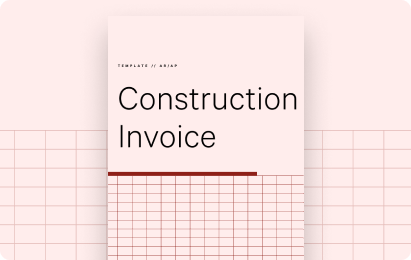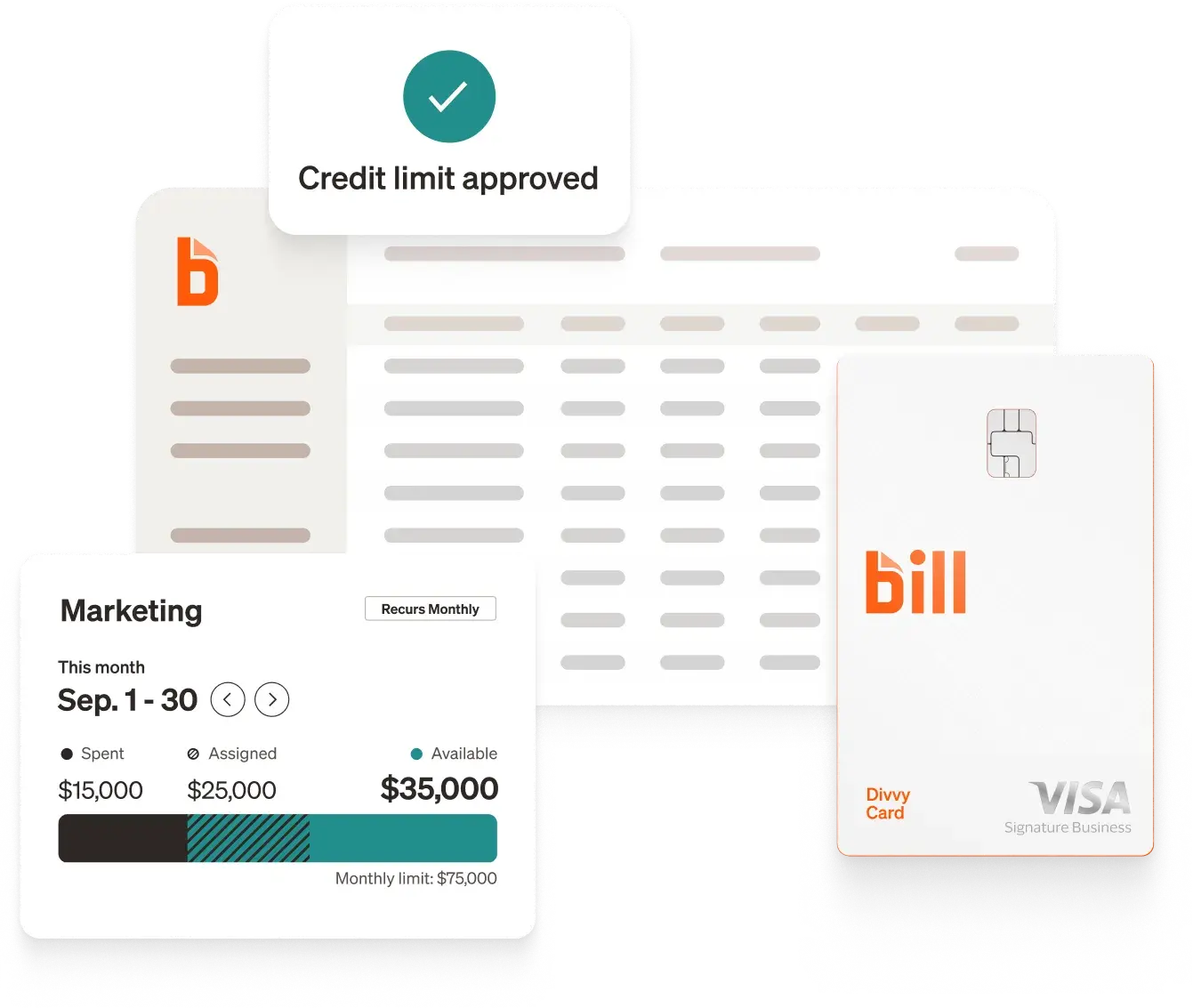What is a construction invoice?
An invoice is a billing document that provides an itemized breakdown of the goods or services provided and their associated costs, summing up to the total billed amount. It also initiates the customer payment process with payment instructions and billing details.
In construction, some special considerations are the labor hours, raw materials, and reimbursable expenses that are passed on to the customer.
Benefits of construction invoice templates
Invoicing can be a tedious process--especially if you run your construction business solo--but it’s essential for all construction companies. The good news is that with an invoice template, you’ll enjoy the following benefits.
Ease of use
Our construction invoice template is tailored to the construction industry. With special considerations for how construction-based businesses bill their customers, you’ll have an easy stepping off point to turn your services into an itemized bill that’s ready to send.
Get paid faster
An invoice can only be processed by an accounts payable team once it’s been received. If it’s taking you days or even weeks to send an invoice, that’s additional time between completing the work and getting paid.
By using a construction template, you’ll speed up the invoicing process. And remember, timely invoices make for timely payments.
Invoicing from anywhere
Small business owners wear many hats and often don’t have the time to sit in one place to grind out admin work.
Invoice templates are easily edited for each customer making it easy to create a professional invoice from anywhere, even on the go. Use our template in Google Sheets or store a version in the cloud and you can access it wherever you may be, potentially even on your phone.
Less chance of errors
No matter your level of financial know-how, there’s always the potential for human error when creating invoices from scratch. Since a template reduces the amount of information you need to input (such as a sales tax calculation), there’s a lower likelihood that a mistake gets made.
How do I write a construction invoice?
Writing a construction invoice can be done using one of our invoice templates. You simply need to download it and customize it according to your preferences.
Once you’ve downloaded the template and have it open in front of you, follow these steps to create a professional invoice that’s ready to send.
- Fill out your company information: Add in your company name, address, and contact information
- Fill out the client information: Add in the same information for your customer in the “Bill To” section.
- Complete the invoice details:
3a. The invoice number is a unique string of digits that you can identify the invoice by in your records and in conversations about the invoice.
3b. The date is when the sale is completed. It’s not necessarily when the invoice is sent, but you should aim to send invoices the same day to get prompt payments.
3c. Terms refers to payment terms, the timeline on which the payment must be paid by. This is typically Net 15, 30, 60, or 90 meaning 15 days, 30 days, 60 days, or 90 days after the invoice is completed, but you can define the timeline as you wish.
3d. The due date should reflect the invoice date and payment terms. For example, if the invoice date is the 15th and you have Net 15 payment terms, the due date should be the 30th of the month.
- Add billable items on separate lines: Break down what you’re billing for into separate items such as labor and materials with associated quantities and per unit costs.
- Fill in the tax rate: This refers to sales tax, which should reflect the state the sale was made in and the goods or services being provided.
- Review the completed work: Confirm all the calculations are correct and there’s no mistakes made on the invoice.
- Add in any additional notes: Use the notes section to add in any comments on the invoice including payment instructions, details about the project, or information you’d want to refer back to.
What is included in a construction invoice template?
Your construction invoice template should contain this basic information:
- The name of your business
- The customer’s contact details
- Invoice number
- Due date
- Payment terms
- Service details, labor costs, and material costs
- and other information you may find necessary to include.
You should also add payment instructions to either the invoice itself or add payment instructions separately when sending the invoice. The last thing you’d want is to miss out on a payment because someone didn’t know how to send it.
What are the different types of construction invoices?
There are several types of invoices that depend on the construction project you are billing for. The main types of invoices are:
- Proforma Invoice: One you give to a client at the start of a project to offer an estimate on how much the project will cost.
- Interim Invoice: It breaks down the total costs into small parts to help with the management of cash flow.
- Final Invoice: You send to a client once the project is done for them to make a payment
- Recurring Invoice: Sent to repeat clients for repetitive projects.
How do I create a construction invoice template?
You don’t need to be an expert with Google Docs, Microsoft Word, or Excel. Nor do you need to be a graphic designer to create a Construction invoice template.
Download one of our pre-designed invoice templates and construction receipt templates and customize it to suit your business. Save a copy of this customized invoice template and use it as the template to generate invoices for all of your future construction work.
How to edit a construction invoice template?
Whenever you’re using a construction invoice template, ensure it reflects your business’s style and suits your needs. Here are the steps on how to edit a construction invoice template:
- Select the construction invoice template from our site
- Download it in your preferred format
- Open the document and add your company’s logo and name
- Fill in essential details
- Save the invoice
- Send invoice to your client
When should I send an invoice?
The simple answer is you should start the billing process as soon as possible—the sooner you send an invoice, the sooner you get paid. As soon as a project is complete, the invoicing process should begin to prevent overdue payments.
But in construction, it can be more complicated than that. As outlined above, sometimes invoices are sent throughout long-term projects to help with cash flow. These are called interim invoices or milestone invoices.
These types of invoices are sent at major checkpoints throughout the project’s completion so the business isn’t stuck waiting for a project to be completed to get paid.
For example, for a major project you may want to consider sending an invoice after the materials have been procured to recoup the costs as soon as possible. Then you may want to invoice at other stages throughout the process.
Alternatively, you could set up a regular invoicing cadence to cover work over a specific period of time, just as bi-weekly or monthly. Each invoice would cover the materials and work provided in that timeframe.
An essential part of managing a business is managing cash flow. How you invoice helps you control when money is coming into the business to cover the costs you incur.
How do I invoice labor?
Simply include a labor line item on your invoice to bill for labor. When invoicing labor, ensure you detail the hourly rates and tasks completed.
Invoicing for materials
Another special consideration for invoicing in the construction industry is invoicing for the materials used in the process. Whether they’re baked into your costs, being reimbursed, or being passed on to the customer at a markup, transparency is key.
Your invoices should clearly list the material, the price, and the quantity used with separate lines for each material. At a glance, the customer should have complete clarity of what they’re being billed for and why.
How you bill for materials should be discussed upfront so it isn’t a shock for customers when they receive the invoice. If there’s a long back-and-forth discussing the details of the invoice, it’ll add to the time it takes to get paid.
How do I write a subcontractor invoice?
Select a subcontractor invoice from our templates, download it in your desired format, open it and personalize the invoice editing the information fields. Save it in whichever format you prefer and send it to your client via email.


